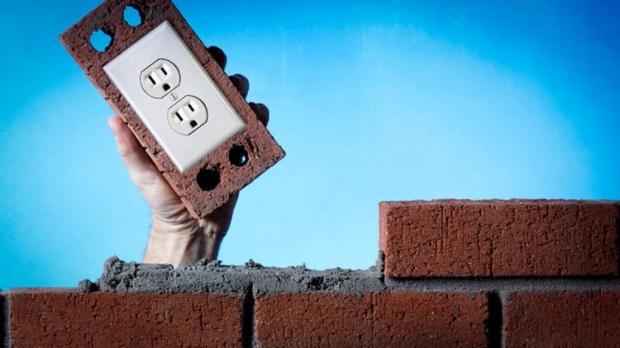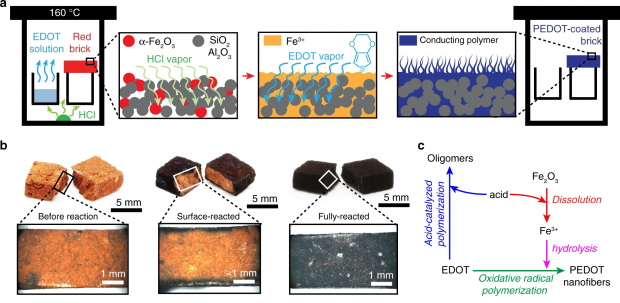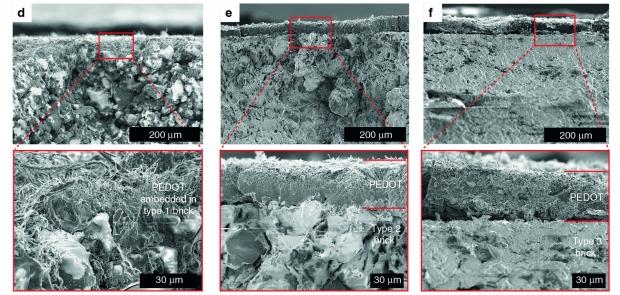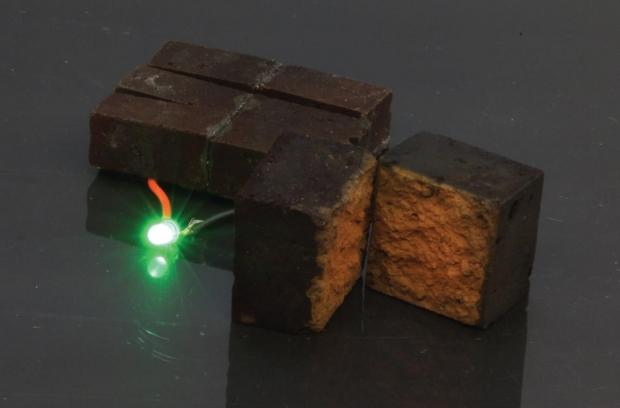This is quite possibly one of the largest game-changing discoveries of the last few decades, where scientists have effectively turned red bricks into supercapacitors.

How? By coating the bricks with a polymer containing intrusive nanofibers, that turn red bricks into something that can both conduct, and store electricity. The red brick is made up simple red clay, which is a key part of researchers making this discovery.
The researchers explained: "The red color of a brick originates from hematite, a pigment first utilized by humans 73,000 years ago and serving today as a low-cost naturally abundant inorganic precursor for catalysts, magnets, and alloys. State-of-the-art energy storage materials are also produced from hematite".

a In a one-step reaction, a brick's α-Fe2O3 microstructure is partially dissolved by acid vapor to liberate Fe3+, promote hydrolysis and precipitation of FeOOH spindles that control oxidative radical polymerization. As previously reported, monomer vapor reacts with partially dissolved FeOOH nuclei resulting in preferential directional growth of high aspect ratio PEDOT nanofibers13. b The thickness of a PEDOT coating is controlled by reaction time and stoichiometry enabling a reaction to generate surface-polymerized PEDOT-coated bricks (core/shell architecture) or fully polymerized bricks (monolithic PEDOT architecture). c A reaction diagram shows the competition between acid-catalyzed polymerization and oxidative radical polymerization mechanisms present in our reactions.
Hongmin Wang at Washington University in St. Louis is behind the team trying to turn a regular red brick into a smart power brick, in a process that heats the brick up in an enclosure with hydrochloric acid and an organic compound known as EDOT.

The two liquid substances then evaporate and condense across the brick's surface, with the acid melting into the iron mineral which then frees up iron atoms that help organic molecules combine to create polymer chains (PEDOT) that coat the surface of the brick.
The polymer creates microscopic entangled fibers that are almost super-powered, where they form a continuous and electrically conductive layer on each face of the brick -- a process that turns the brick black, from red.

But the most important part is: how much power can it store, and how much can it feed out? Well, the researchers tested 3 different sugar-cube-sized bricks where after they were 'fully charged' (I can't believe I'm writing that about a brick) for 15 seconds, it was enough to power an LED for 11 minutes, before the voltage dropped from its starting point of 2.7 volts to below the LED requirement of 2.5 volts.
The researchers explained: "Our supercapacitor technology adds value to a 'dirt-cheap' construction material and demonstrates a scalable process affording energy storage for powering embedded microdevices in architectural applications that utilize fired brick".
While this particular technology might not ever see you going outside, painting your bricks, and getting free electricity -- the research going into this could lead to some truly exciting advances in other products and even other industries.



